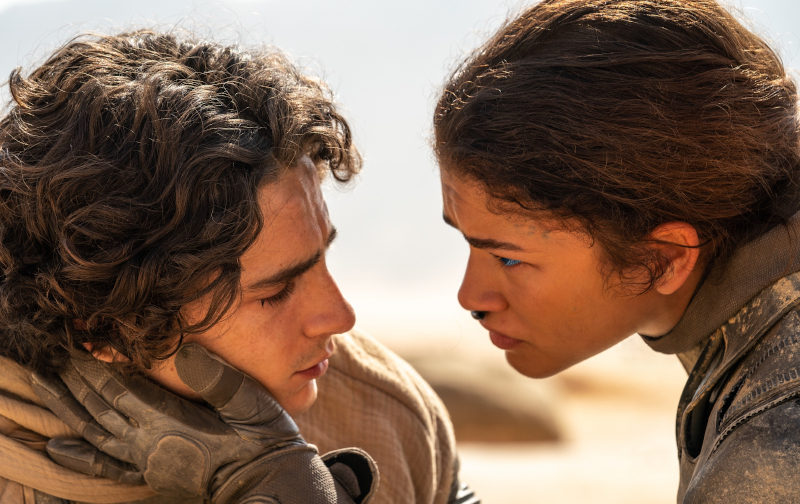Director – Denis Villeneuve – 2024 – US – Cert. 12a – 166m
*****
Afallen dynastyfights back on a desert planet populated with giant sandworms– out in cinemas on Friday, March 1st
The second part of the adaptation of Frank Herbert’s sprawling novel Dune (1965) – the title Dune Part Two following the title Dune Part One on the print of the previous film – poses the filmmakers a greater adaptation challenge than the first in terms of the magnitude of, exactly what do you leave out to turn it into a strong, two and a half hours plus movie, and what do you keep in.
Villeneuve clearly doesn’t want to repeat himself, because he takes a very different approach adapting the second half of the book than he did for the first, which may or may not serve to make the two halves feel weirdly incongruent when viewed, as they surely will be, back to back. Indeed, it makes you wonder whether there exists a much longer cut of Dune Part Two or a much longer version of the screenplay – it all depends on whether the pruning took place at the scripting stage, the shooting stage, or the editing stage.
While the film flows well and doesn’t feel like large chunks have been hacked out, one can imagine a much longer version containing more material. This wasn’t the case with the earlier film where much material from the book was dropped, but all the really essential narrative stayed in.
And yet, once again, what’s on the screen feels like (the second half of) the book in essence, more or less. Except that it feels as if the production has deliberately ramped up the battle and action sequences and ramped down the more meditative, introspective, drug-induced visions which are such an intrinsic part of (the second half of) the book.
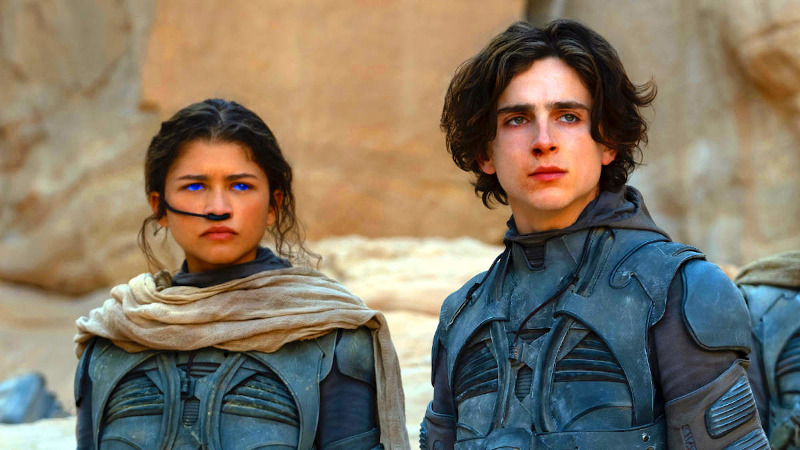
One should mention at this point that it would be a huge mistake to watch Dune Part Two without seeing Dune Part One first.
***SPOILER ALERTS IF YOU’VE NOT SEEN DUNE PART ONE – OR IF YOU’VE SIMPLY NOT READ THE BOOK AND DON’T WANT TO KNOW IN ADVANCE WHAT HAPPENS***
The plot: Following the death of and the retaking by House Harkonnen from House Atreides of the desert planet Arrakis, the universe’s only source of the valuable commodity of spice, necessary for space travel, the Duke’s concubine the Lady Jessica (Rebecca Ferguson) and son and heir Paul (Timothée Chalamet) have escaped to the desert to join forces with the mistrustful, indigenous Fremen led by Stilgar (Javier Bardem) and whose number include Chani (Zendaya), the girl frequently seen by Paul in his prescient dreams.
Guided by his late father Duke Leto’s vision of controlling Arrakis by developing Desert Power, Paul seeks to learn Fremen ways and become Fremen himself This includes learning to ride the fearsome, giant sandworms which populate the planet and which the Fremen use as both transport and weapons of war.
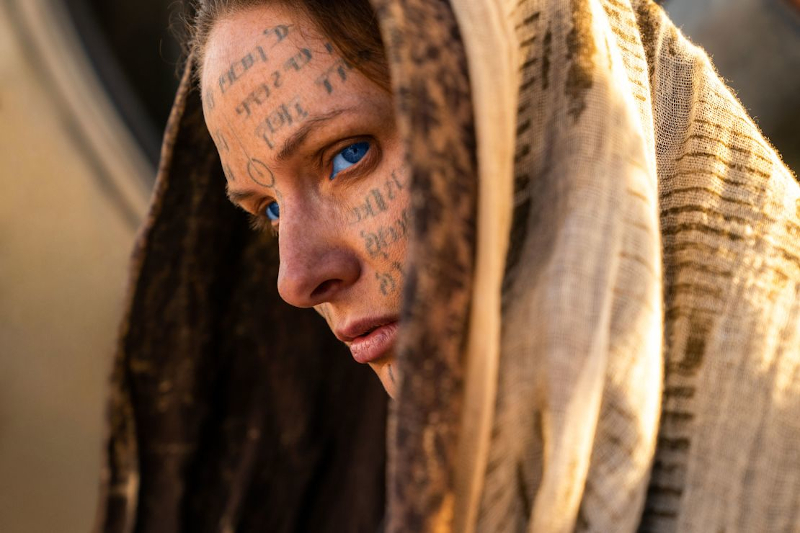
Paul’s mother Jessica, a member of the Bene Gesserit religious sisterhood, the agenda of which includes breeding a superior human male known as the Kwisatz Haderach, assumes the role of the Fremen tribe’s Reverend Mother when the current one dies of old age. To do this, she must drink a significant quantity of the blue ‘water of life’, an hallucinogenic liquid created by drowning baby sandworms, which places inside her mind all the memories of all the previous Reverend Mothers before her. This process would kill men, who are forbidden to undertake it. The sisterhood has reckoned without Jessica being pregnant, resulting in the female baby in her womb receiving the myriad memories at the same time, and reaching adult consciousness as a human embryo, something considered by the Bene Gesserit as an abomination.
The despotic Baron Harkonnen (Stellan Skarsgård), meanwhile, has his bullying nephew Rabban (Dave Bautista) squeeze Arrakis to maximise Spice production, building Rabban’s unpopularity on Arrakis to make it fertile ground for the rule of his favourite nephew Feyd-Rautha (Austin Butler from Elvis, Baz Luhrmann, 2022). And at the imperial court, the Bene Gesserit-trained PrIncess Irulan (Florence Pugh), an intelligent woman who writes widely on history, biography, religion and philosophy, learns of a possible way to survive the coming conflict which will inevitably kill her father the Emperor (Christopher Walken).
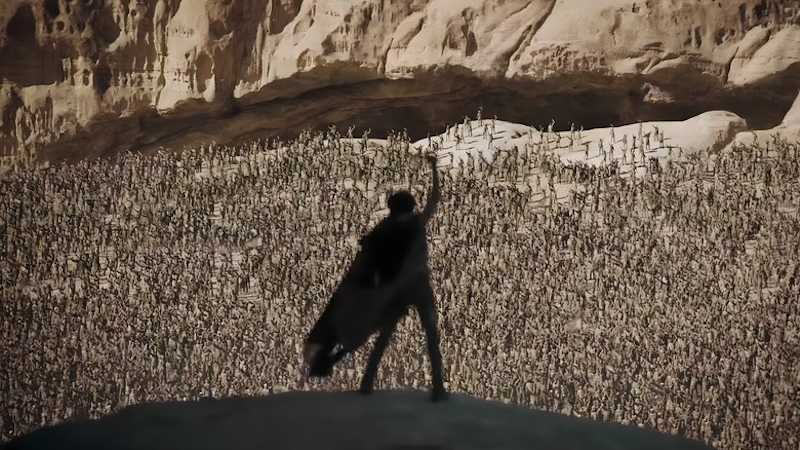
Paul, whispered by many Fremen including the religious Stilgar to be their prophesied leader, the Lisan Al-Gaib (the voice from the outer world), slowly develops a romance with courageous Fremen warrior Chani, and later attempts the drinking of the water of life undergone by his mother, filling him with the memories of his ancestors and clarifying his visions of myriad, possible futures, most of which end in jihad, or holy war, sparked by the Fremen.
The splitting of the novel into two halves for two films allows for certain elements in Part One to be dropped in Part Two, and certain elements left out of Part One to be included in Part Two. In part this is due to obvious factors like characters dying in the first part of the book, and thence in the first film. The mentats (people possessed of an ability to calculate numbers rapidly and plan ahead in great detail) had a minor presence in the Part One but are scarcely seen in Part Two, a shame since they were always a compelling element in the background in the books.

Conversely, without ever being explicit about it, there is considerably more suggestion that both the despotic Baron Harkonnen (Stellan Skarsgård) and his favourite nephew Feyd-Rautha (Austin Butler from Elvis, Baz Luhrmann, 2022) are deviant sexual psychopaths likely on occasion to kill those from whom they take their sexual pleasure: it’s there in pretty boy corpses near the Baron’s bathing chamber and in a scene where Feyd-Rautha suddenly and unexpectedly kills on a whim with a knifesome of his attendants-in-waiting. The Baron’s sadism was obvious in the first film, but its sexual side was not. Feyd-Rautha doesn’t appear until late on in the novel, so had no reason to be included in the first film.
The other major new character is the Princess Irulan. Although she, too, only really appears towards the end of the book, the verbal text is punctuated (at the start of unnumbered chapter headings) with various text extracts from Irulan’s writings. Dune Part One, released as Dune and made with no guarantee of the second part of the novel being made, opens with a voice-over by Chani rather than observations by Irulan, an inconsistency that would be easily rectified should there ever be a release of a re-edited director’s cut of the first film (or both films, for that matter).
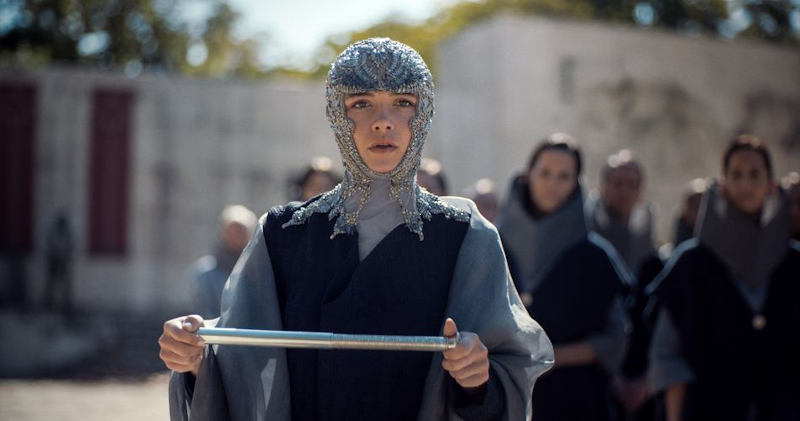
A much bigger problem occurs in the way the film skips over Jessica’s multiple Reverend Mothers memories and Paul’s visions. The balance felt just about right in Part One, but the visions take on increasing significance as the book develops and there’s the distinct feeling here that these have been largely sidelined for fear they would slow the film down (which they would, but might also lend it considerably more gravitas than the released cut of the film possesses).
Part Two also omits much material about Jessica’s daughter (glimpsed briefly as a girl in one of Paul’s dreams?) who in the book is born as a fighting adult consciousness in a child’s body. In terms of trying to streamline the story to make a digestible, coherent movie, this is a fairly obvious decision, but admirers of the book will nevertheless still be sorry to see the character left out.
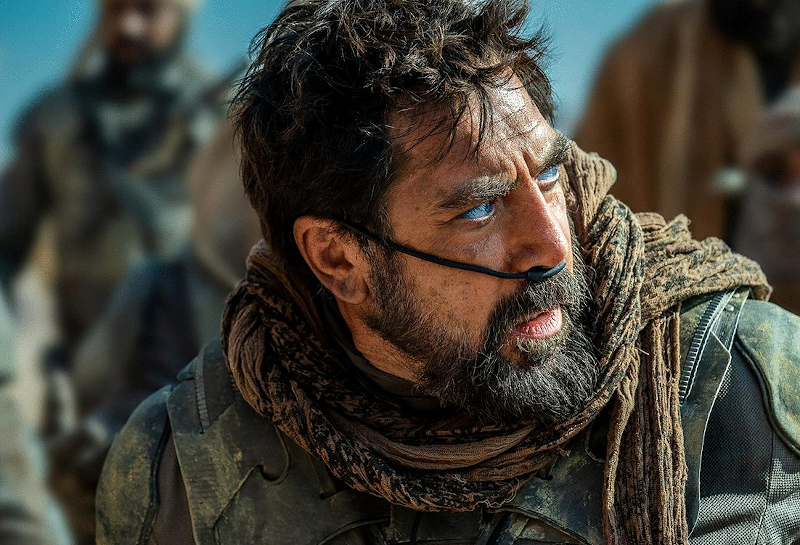
The film also adds religious factions among the Fremen not found in the book, where the religion is pretty much the same for all of them. The fighting Fremen of the North tend to be less religious, regarding the Bene Gesserit as cunning manipulators (which they are). However, the South of the planet contains fundamentalists who believe the religious myths more readily, and this is where Stilgar comes from. What is similar to the book, and is very well executed (quietly, in the background) is Stilgar’s transformation from Paul’s companion and fellow fighter to his admirer of Paul as a religious figure.
Timothée Chalamet plays a Paul ageing under the twin weights of growing responsibility and visionary dreams with considerable skill. Rebecca Ferguson’s Jessica, now pregnant mother and widowed concubine, also develops into a religious figure. You can feel Fremen whispering ‘witch’ as she passes, and you feel much the same thing in your gut. As with Paul, it’s the same character as in Part One but considerably developed both in the script and in terms of performance on the screen. Zendaya as Chani gets far more screen time than in the first film, in line with the story and structure of the book. She was effective enough in what little room she was given in Part One, and she’s just as good here given more to do.
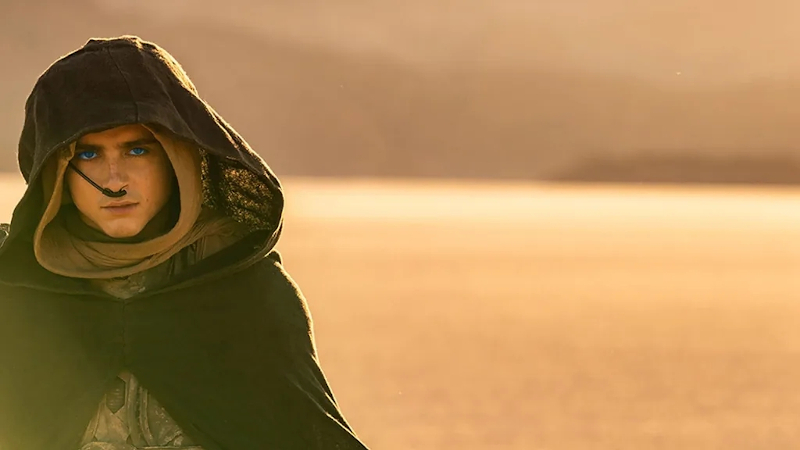
Also effective is the use of naming, with a memorable sequence in which Paul chooses as his Fremen name Muad’Dib after the kangaroo desert mouse of Arrakis.
Terrific combat action sequences involving Paul, Chani and others often seem to serve no real purpose in terms of advancing the plot – even if they successfully deliver considerable, in-the-moment excitement to the audience – except perhaps to showcase Paul and Chani’s combat bravery and skill tempered with an onscreen glorification of war and military hardware.
Not that it’s all bad: Villeneuve is fascinated by technology and vehicles, and the film’s many spaceships, harvesters and craft military and civil frequently boast remarkable and breathtaking designs. The effort invested into this area of the film comes at a price, though; the Fremen’s in-rock formation home of Sietch Tabr is scarcely seen, and its most notable sequences occur when the Harkonnens bomb it to ashes. Which means that its loss is felt nothing like as keenly as if more scenes had taken there, to give us a real feel for the sense and culture of the place. The sense of loss of place was much stronger and more effectively achieved in Part One with both House Atreides’ home planet of Caladan, which it have to leave, and the labyrinth of buildings it occupies on Arrakis, which it also has to leave.
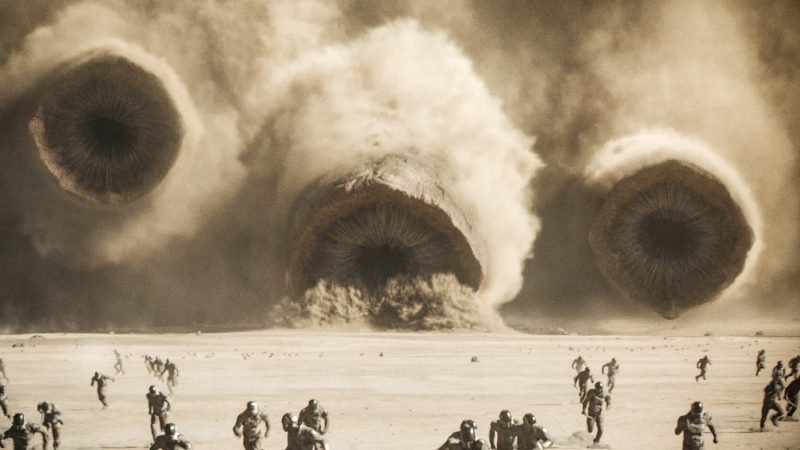
I realise I haven’t mentioned the sandworms. There are plenty of them, and plenty of spectacular visuals, yet as with the first film, they are kept to a minimal level in the editing so that they at once inspire awe but are never allowed derail the story by being given too much attention. As with Part One, Part Two exhibits considerable skill in getting this balance just right.
Nor have I mentioned Léa Seydoux, perfectly cast as minor character Lady Margot Fenring. Whether the character’s pruned down appearance adds much to the overall film is open to question, but there’s no doubt that the actress turns in a compelling performance in her few scenes.
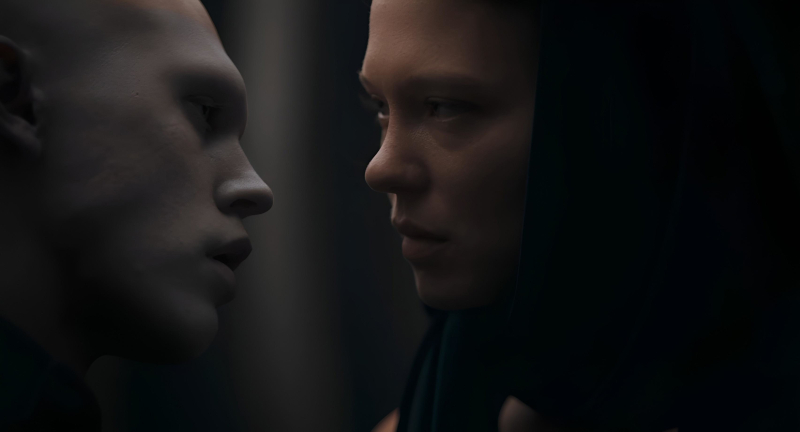
Nor have I mentioned Hans Zimmer’s extraordinary, rousing score, very much of a piece with his work for Part One. Nor, for that matter, the fine sound effects work, particularly one of the lowest bass rumbles I have ever heard in a cinema in the sequence with the Spice harvester craft.
All in all, Dune is a supremely difficult film adaptation to pull off and get right. There are certainly complaints that can be made about Part Two, but they mostly amount to nitpicking. For a two and a half hour adaptation – or five hours if you take both parts in one go – this is an impressive piece of work all round. Just make sure you watch (or-rewatch) Part One first.
Once again, both parts of Dune were filmed for IMAX cinemas – so see them in one of those if you possibly can.
Dune Part Two is out in cinemas in the UK on Friday, March 1st.
Trailer:
Trailer two:
Trailer three:
